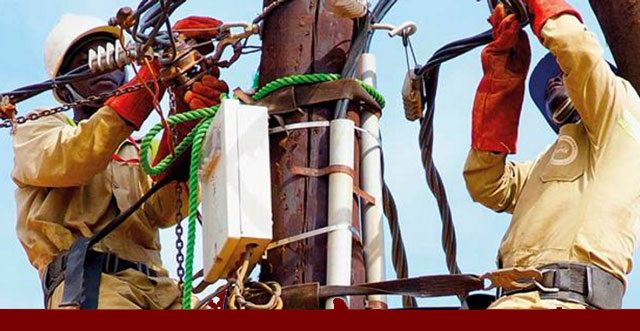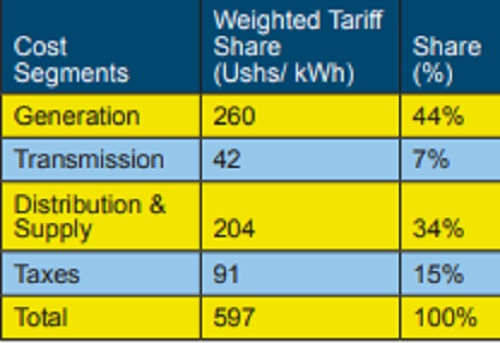
How four government departments push up the rate consumers pay for the electricity
COMMENT | FRANCIS MUJJUNI | The rationale employed by our hunting ancestors has severally bewildered many today. In droves, our ancestors would hunt down a single tiny rodent with the hope that at capture, they would share it satisfactorily.
From the onset, it was clear that regardless of what proficiency of butchery skills the best among the hunters possessed, there was only but a limited substantive number of pieces the divided catch could yield.
To apply the metaphor to the situation today, especially in the electricity sector, the government departments could be appropriately referred to as the hunters, hunting down the consumers of services.
The hunter’s trophy, too, has since changed from the coveted meaty capture to something as benign as your electricity bills.
In the case of electricity, the government has metamorphosed into a single hunting entity that seeks big enough ‘game’ to share amongst its numerous quasi-hunters departments. An unlike in the past, the government departments do not seek to eat small bits.
So the charge due to a unit of electricity consumed, the tariff, is mainly apportioned to four entities; the power generators, the transmission company, distribution entities, and Uganda Revenue Authority.
In the following analysis, we will track the energy that was sold to the end user by Uganda’s biggest distributor, Umeme Uganda Limited, in 2017 and deduce how the tariff was plausibly shared amongst the key entities within electricity supply chain.
The Electricity Regulatory Authority (ERA) and the Uganda Electricity Transmission Company Limited (UETCL) reported that 3,856 Million kWh (units) of electricity were sold by the 21 generation plants that were connected to the grid at a cost of about Shs1 trillion. This implies that the average purchase cost of a unit of electricity from the generators was Shs260.
It is reckoned from ERA’s generation tariff report that the average tariff rate accorded to electricity generation plants is about Shs338 per kWh which is higher than the derived purchase cost from the generators. This is disparity is due the low tariff rate of Shs54/kWh applied to the plants operated by Eskom Uganda which contributed 42% to the electricity mix of plants connected to the grid in contrast to say, Bujagali, which at 47% contribution burdened the taxpayer with a mammoth cost of Shs360 per unit.
UETCL, which is responsible for buying power from the generators and selling it to the distributors, recorded purchases of 3,867 million units in 2017. The purchased electricity is somewhat more than that which was locally generated with the deficit having been filled by supplies from neighbouring countries.
About 90% of all the energy purchased by UETCL was then sold to Umeme which subsequently supplied about 2,760 million units to the end users. Umeme’s clientele base, as seen in Table 1, has been segmented within the large industries which consume about half of the supplied energy and closely followed by the domestic consumers at 22%. The commercial, medium industrial and street light end users share out 28% of the supply.
Table 1 Showing Umeme Customer Segments, Energy Sales and Weighted Tariff in 2017

The average end-user within the Umeme customers segment was levied a weighted tariff of Shs597 for every unit for power consumed in 2017; this is composed of Shs506 for every consumed unit as seen in Table 1, and the applicable tax rate of 18%.
Aside from Umeme’s distribution and supply mandate, it does also collect the revenue due to the offered service of electricity and successively remits a portion to UETCL which similarly does the same to the generators.
The derived weighted tariff is nearly Shs200 shillings less than what an ordinary domestic consumer paid and this disparity results from the fact that nearly half of the energy on the grid was consumed by large industrial users who are charged a lower tariff than the other categories of consumers.
Umeme also reported that in 2017, the cost of purchase of 3,334 million units of electricity from UETCL was Shs1007 billion. This then implies that Umeme expensed about Shs302 per unit to UETCL which in turn paid Shs260 per unit to the producer. This in implies that the cost of transmission of a unit of electricity was about Shs42 per unit.
Using the derived weighted tariff, cost of electricity generation and transmission as well as the known direct contribution to the government which is through the Value Added Tax, it is then possible to quantify the share of tariff due to distribution and supply which, in the case of 2017, was Shs204 per unit as seen in Table 2.
Table 2 Showing Share Distribution of the Tariff in 2017 Cost Segments Weighted Tariff Share

It can be observed from Table 2 that the lion’s share of the electricity tariff (44%) goes out to the generation plant owners and concessionaires followed by Umeme at 34%. This analysis reaffirms the public narrative asserting that Umeme enjoys the bulk of the tariff given the fact that 21 generators shared out 44% in contrast of 34% by one distributing entity.
The high distribution and supply costs can be curtailed by revising the distribution concession process to avoid a near-monopoly that is being enjoyed by Umeme. Unfortunately, the outcomes from such revision are likely to be applied when Umeme’s current concession comes to expiration in 2025.
Also a light has been cast on the damning fact of the hefty cost of generation of our electricity which, at nearly USc 7/kWh, albeit heavily reliant on ‘cheap’ hydropower, is competing with the most expensive forms of generation like onshore wind, bioenergy and geothermal which globally are routinely being commissioned at about 5 U.S. cents per kWh.
It is evident that the cost of generation of electricity in Uganda is a big prime mover of the tariff rate and this is essentially driven by the preposterously high tariff due to Bujagali Energy Limited coupled up with the directive to dispatch it first and as such, guaranteeing that an ‘expensive’ plant is wheeled first on the grid contrary to international best practices.
In the past, Uganda generally offered high tariff rates to generation plants and although this strategy was geared to stimulate private capital investment by independent power producers, it also led to higher energy costs borne by the end-users. The domestic consumer in Uganda pays nearly the same as that in France, Sweden and the USA; affirming the fact that although the hunter and the trophy have both changed, the hunter’s hope, that the meat from the tiny rodent shall suffice to quench the hunger of many, is still unchanged.
****
Francis Mujjuni is a Renewable Energy Specialist and an Assistant Lecturer from Makerere University in the Department of Mechanical Engineering. Contact: Francis.mujjuni@gmail.com
 The Independent Uganda: You get the Truth we Pay the Price
The Independent Uganda: You get the Truth we Pay the Price



Hello Editor,
I have read Francis’ elaborate permutations of generation, transmission and distribution tariffs and how he has made attempts to extrapolate it, solely, to Umeme’s concession.
Umeme has a guaranteed 20% ROI, BUT….hold it there, it also has strict performance targets the good lecturer has chosen to ignore. Instead he posted thus “The high distribution and supply costs can be curtailed by revising the distribution concession process to avoid a near-monopoly that is being enjoyed by Umeme” He doesn’t explain the source of distribution costs.
I will pick on two main ones; Energy Losses, or simply put power theft. The weak electricity act of 1999 gives slaps on wrists for power theft. Umeme has reduced these losses from 38% to 16.5%. What are Francis’ views on Power theft/Energy Losses?
Secondly, the Distribution Operation &Maintenance costs (DOMC) have a bearing on end user tariffs. He says nothing about them. What is the cost of delivering 240 volts in a socket in Rukungiri, Lira as opposed to delivering the same in Mitchell hall, or Nsambya hill? This cost among 22 generators and opposed to 1.3 million consumers? What is the proportion of Vandalism cost in distribution tariff?
I hope Mr. Mujjuni will shed more light on these issues.
Thank you.
my electricity bill was very high, but with some gadgets now bill is in my control